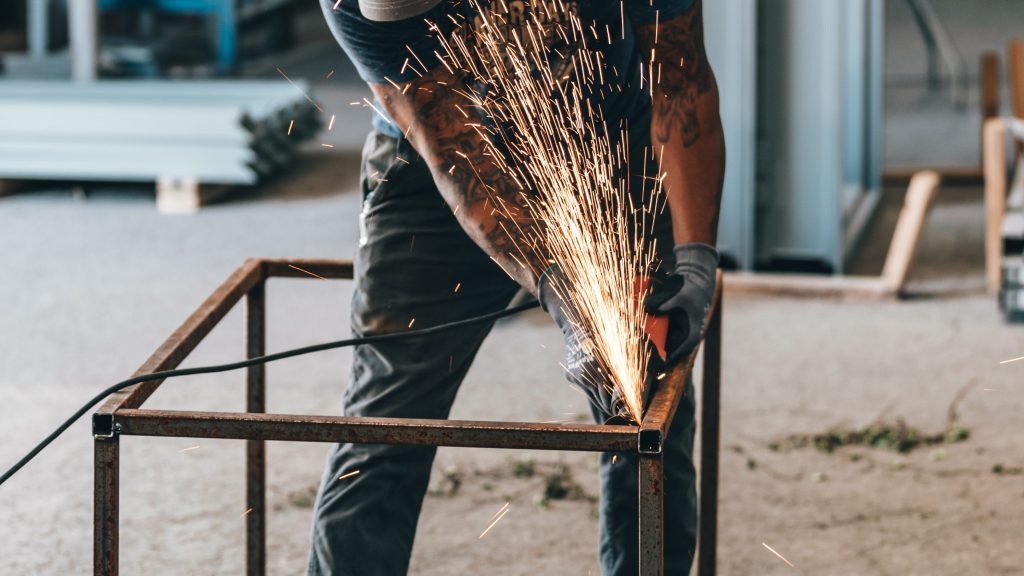
1. Welding Has Been Around for Millennia
Welding has a rich history dating back to ancient civilizations, with evidence of early welding techniques found in Egypt, India, and Greece. The Egyptians, for example, were known to use forge welding, a process that involved heating and hammering metal pieces together, as far back as 3500 BCE. In modern times, welding has evolved to incorporate advanced techniques and technologies, but its core purpose remains the same: joining metals together to create strong bonds.
2. Underwater Welding: A High-Pressure Job
Did you know that some welders work underwater? Underwater welding is a specialized profession that combines diving skills with welding expertise. These welders often work on repairing ships, pipelines, and other underwater structures, facing unique challenges such as limited visibility, water pressure, and aquatic life. It’s a demanding but rewarding job that requires extensive training and certification.
3. Welding in Outer Space
Welding is not limited to Earth – astronauts also perform welding tasks in space! Space welding is essential for the maintenance and construction of spacecraft and space stations. In the weightlessness of space, special techniques and equipment must be used, such as electron beam welding and friction stir welding. These methods can create strong, reliable bonds without the need for a traditional welding torch or gas.
4. Welding Robots on the Rise
The rise of automation has led to the increased use of robots in the welding industry. Robotic welding offers numerous benefits, such as increased precision, efficiency, and consistency. While some worry that robots may replace human welders, many experts believe that the two can work together to optimize productivity and maintain high-quality welding standards.
5. The Art of Welding
Welding isn’t just an industrial process – it’s also a form of art! Artists and sculptors often use welding techniques to create stunning metal artwork, from intricate sculptures to large installations. Welding artists combine creativity with technical expertise, demonstrating the versatility and beauty of metalworking.
6. The Importance of Safety in Welding
Safety is paramount in the welding industry, as the process involves high temperatures, bright light, and potentially dangerous equipment. Welders must wear protective gear, such as helmets, gloves, and safety glasses, to minimize the risk of injury. Additionally, they must ensure proper ventilation to prevent the buildup of toxic gases. By following safety guidelines and utilizing proper equipment, welders can create strong bonds while minimizing risks.
7. Welding Techniques for Every Job
There are numerous welding techniques, each with its unique advantages and applications. Some common methods include MIG welding, TIG welding, stick welding, and flux-cored welding. Choosing the right technique depends on factors such as the type of metal, the desired bond strength, and the specific requirements of the project.
8. Welding Across Industries
Welding plays a critical role in a variety of industries, from construction and manufacturing to aerospace and automotive. Welders are essential for the creation and maintenance of countless structures, products, and machines that we rely on daily. As a result, skilled welders are in high demand and can find rewarding careers in diverse sectors.
9. Welding Training and Certification
To become a professional welder, individuals must undergo extensive training and obtain proper certification. Programs are available through vocational schools, community colleges, and apprenticeships, covering a range of topics such
as welding techniques, safety protocols, and equipment maintenance. By completing a training program and earning industry-recognized certifications, welders can demonstrate their expertise and increase their employability in the job market.
10. Welding: A Growing Profession
Despite advancements in technology, the demand for skilled welders continues to grow. As industries expand and new technologies emerge, there will always be a need for talented individuals who can create strong, reliable bonds between metals. This makes welding an attractive and stable career choice for those interested in hands-on work and technical mastery.
Conclusion
Welding is a fascinating and versatile profession that has been around for millennia. From underwater welding to creating art, this trade offers a wealth of opportunities for those willing to learn and master the craft. As technology continues to advance, the welding profession will undoubtedly evolve, presenting even more exciting possibilities for future welders.
FAQs
- What type of welding is best for beginners?
MIG welding is often recommended for beginners due to its ease of use and versatility. It is a forgiving technique that allows new welders to practice and build their skills. - What is the highest-paying welding job?
Underwater welding is considered one of the highest-paying welding jobs due to the specialized skills and training required, as well as the risks associated with working in underwater environments. - Are welding jobs in high demand?
Yes, welding jobs are in high demand across various industries, including construction, manufacturing, aerospace, and automotive. Skilled welders are essential for creating and maintaining the structures and products we rely on daily. - How long does it take to become a certified welder?
The length of time to become a certified welder depends on the training program and the individual’s commitment. On average, it can take anywhere from 6 months to 2 years to complete a welding program and obtain certification. - Can you teach yourself to weld?
While it is possible to learn basic welding techniques through online resources and self-teaching, it is highly recommended to seek professional training and certification to ensure proper understanding of safety protocols, equipment handling, and advanced techniques.
